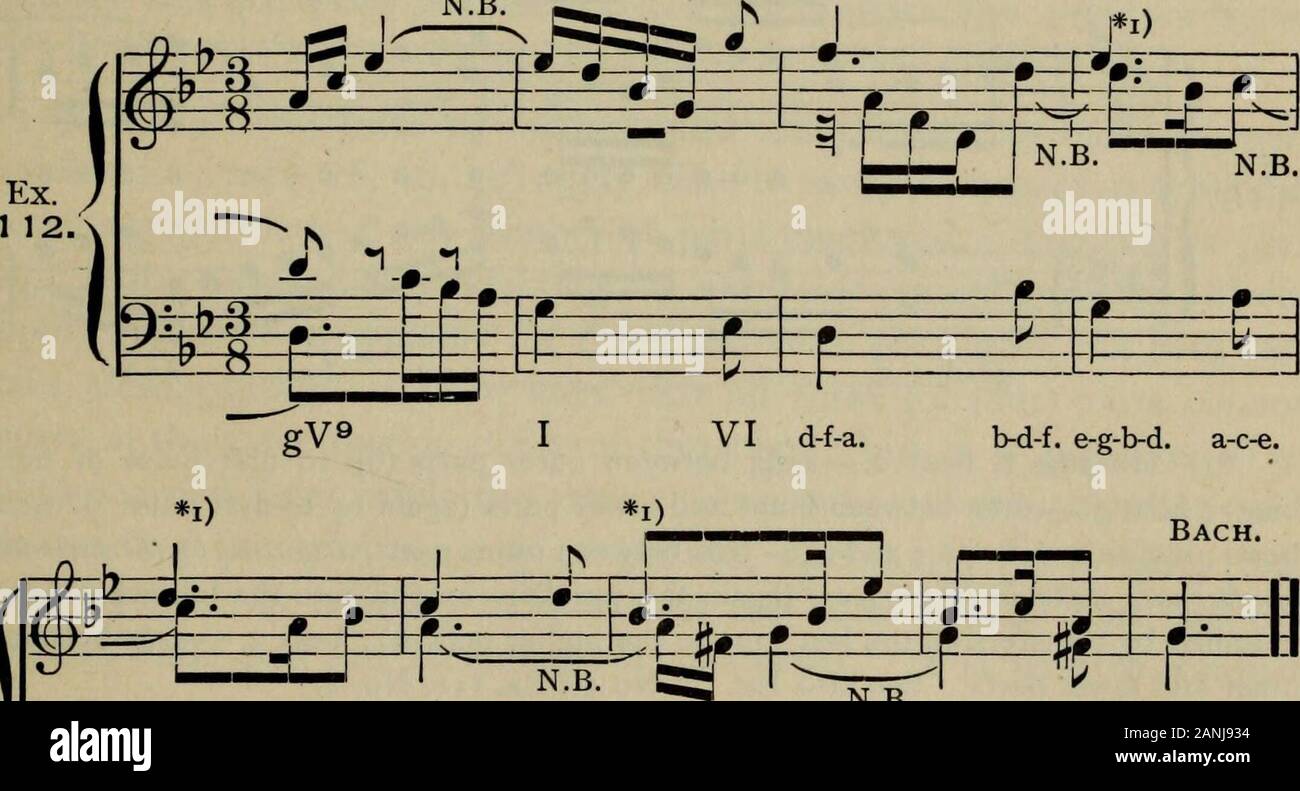Counterpoint applied in the invention, fugue, canon and other polyphonic forms : an exhaustive treatise on the structural and formal details of the polyphonic or contrapuntal forms of music, for the use of general and special students of music . in a word), asto counteract the impression of simple chord-succession. This deviceis omitted in Ex. no, but plainly seen in Ex. in, No. 2 ; and may beverified in the other given illustrations, also. But this is not all; the insertion of passing-notes must not beadopted as a device to this end alone, or the texture will, after all,amount to no more than

Image details
Contributor:
The Reading Room / Alamy Stock PhotoImage ID:
2ANJ934File size:
7.2 MB (285.5 KB Compressed download)Releases:
Model - no | Property - noDo I need a release?Dimensions:
2153 x 1161 px | 36.5 x 19.7 cm | 14.4 x 7.7 inches | 150dpiMore information:
This image is a public domain image, which means either that copyright has expired in the image or the copyright holder has waived their copyright. Alamy charges you a fee for access to the high resolution copy of the image.
This image could have imperfections as it’s either historical or reportage.
Counterpoint applied in the invention, fugue, canon and other polyphonic forms : an exhaustive treatise on the structural and formal details of the polyphonic or contrapuntal forms of music, for the use of general and special students of music . in a word), asto counteract the impression of simple chord-succession. This deviceis omitted in Ex. no, but plainly seen in Ex. in, No. 2 ; and may beverified in the other given illustrations, also. But this is not all; the insertion of passing-notes must not beadopted as a device to this end alone, or the texture will, after all, amount to no more than embellished harmony. A higher purpose— that of independent melodic progressions — must dictate the employ-ment of such inharmonic tones ; and while the progressions must neces-sarily be governed by the chord-contents, their independence must beensured by sufficient evidence of thematic purpose. Review, in thisconnection, par. 17^, (pars. 13/, 21^); also par. 7. d. Of the purely mechanical means of obtaining voice-independence, none is more efficient and indispensable than the Tie, which advancesin importance in proportion to the number of polyphonic parts asso-ciated. Review thoroughly par. 22^/, and par. 9, entire. For example: N.B. N.B. N.B. §^ $? g-b-d. a-c-e-g. d-f-a. g-b. c-e-g. *i) Some of the ties in this sentence result in positive dissonance, by producingSuspensions; at other places, on the contrary, the tie simply modifies the rhythm ofits part, without influencing the consonant effect. See also Ex. 57, No. 6 (ties inlower part); Exs. 58, 59, 60; Ex. in, Nos. 1 and 2 ; Ex. 113. 140 APPLIED COUNTERPOINT. Par. 6ie. e. The greater the number of parts employed in a polyphonic com-plex, the greater the likelihood and necessity of indirect coincidencebetween a certain pair of them, — to counteract the danger of exces-sive dissonance from the independent movements of so many individualparts. This is probably most frequently exhibited in the prevalence ofparallel movem